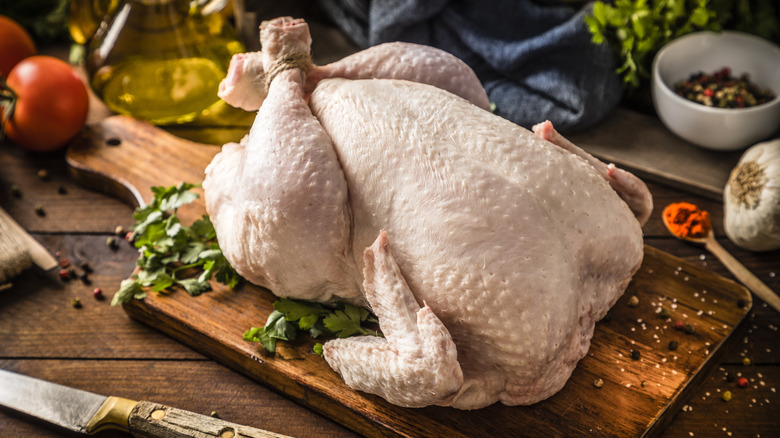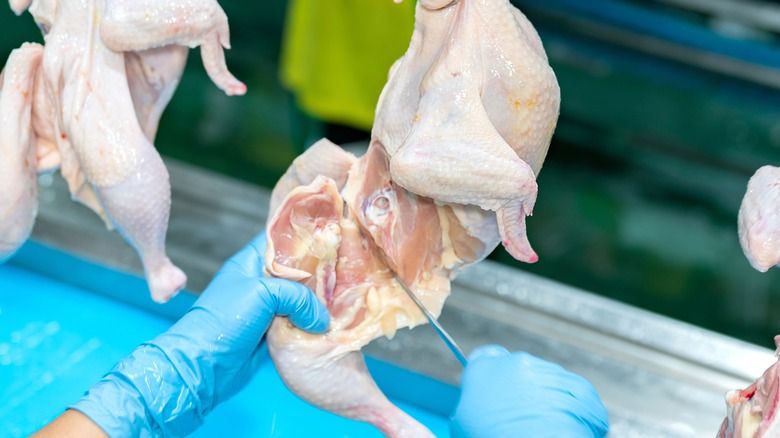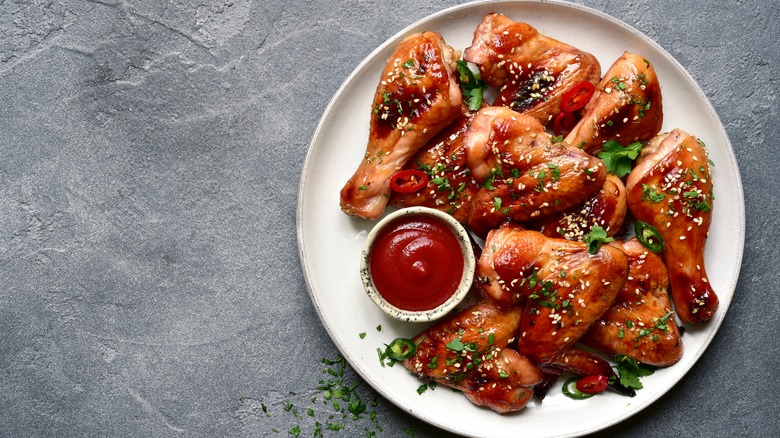If You're Cutting Up Meat, Follow The Fat Lines For Efficiency
It might be more convenient to purchase meat that has already been cut to size, but with today's prices, it's not always reasonable. Still, picking up a whole chicken and carving off your own drumsticks, thighs, and breasts can feel overwhelming if you don't know how to do it. You want the meat to look right, and you definitely don't want to cut your finger along the way. Luckily, there is a basic rule to follow that will simplify the entire experience — just follow the fat lines. Doing so will not only allow you to easily identify where a particular cut ends, but it will make the whole process super efficient. With practice, this method can enable you to carve up an entire raw chicken into the perfect cuts in a matter of minutes.
If you need to trim cuts of beef or pork, you'll also want to trim along the lines of fat so that it can easily be pulled away. But for the most part, this method is meant to save you time and money (as well as possibly anguish) when breaking down poultry.
How to identify the fat lines
Picking out the fat lines is an easy task and there's a good chance you've already figured out how to do so if you've handled enough fryers so far. But if you haven't — or if you've never had a reason to take the skin off a whole chicken before — rest assured you won't have any trouble identifying it once you know what to look for.
Whereas the meat of the chicken is pink, as you probably know its fat is white. This causes the fat to stand out, making your job much easier. Of course, you will have to peel the skin back a bit to find it. But don't worry about ruining your thighs or drumsticks this way. You'll ultimately be able to leave the skin on those pieces; you just need to lift it enough to find that telltale white line. You will want to remove the skin from the breast, however, since you'll need to be able to see the entire circumference of the fat lines as well as the breastbone itself.
But what about the joints and breastbone?
Aside from following the fat lines, you'll also want to follow the breastbone of your chicken — slicing the meat off of it instead of trying to cut through the bone. A tiny layer of meat may be left behind, but that's okay. If you're making stock from the chicken's carcass (which, why wouldn't you?) then what's left behind will still go to good use.
As for the wings, thighs, and drumsticks, do not attempt to just hack them off. After slicing along the fat lines, you'll want to find the joints and pop the bones out of place — essentially dislocating the chicken's joints. Ouch! Good thing it's not alive anymore, huh? Once you do that, there will be enough space left between them to cut through without having to worry about hitting bone.
By following these simple tips, you can easily butcher your own whole chicken fryer in a short period of time. With the price of whole chickens being significantly less than their individual parts, you'll certainly be able to save a lot of money — especially when it comes to chicken breasts. Just remember to follow the fat lines and the whole process of carving your own raw chicken cuts will go smoothly. Even better, since you'll be able to save all of the leftover scraps to make chicken stock, you can be sure that nothing will go to waste.


